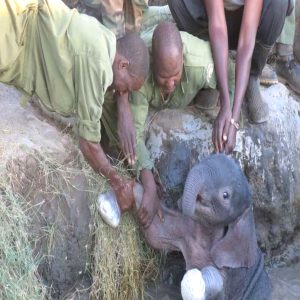In an almost sensationalist operation targeting antiquities smugglers in Bushehr province, southern Iran, the police chief announced the recovery of invaluable ancient artifacts. This booty includes two gold masks dated to the pre-Achaemenid and late Elamite periods, roughly over 2,000-years-old. The other recovered items are a bowl, statues, several pottery pieces from the Parthian period.
Recovery of the Smuggled Goods
The finds were announced by Esmaeel Sajjadi-Manesh, the provincial police chief, according to a report by Tehran Times. Originating from the Parthian and Elamite periods, the seizures were part of an undercover operation: authorities laboriously tracked the smugglers, ultimately apprehending them as they attempted to sell the artifacts in Shiraz, Fars Province.
The smugglers were first spotted in Ganaveh Port, Bushehr province, and were followed until the final stage of the illegal transaction, which took place in Shiraz. After their capture, the confiscated artifacts were promptly returned to Bushehr province for further analysis.
Sajjadi-Manesh proudly explained the historical significance of the seized relics. He drew attention to one of the gold masks, reportedly valued at several billion tomans (around $50,000) at the time of the smuggling operation

The recovered artifacts consist of two gold masks, a bowl, statues, and various pottery pieces. (Mehr News Agency)
The Elamites: Bushehri Roots in a Legendary Empire
The Elamite civilization, which dates to approximately 3000 to 500 BC, played a key role in the development of the region that is now western Iran, including Bushehr. Research conducted by a French archaeological team in 1913 confirmed Bushehr’s roots in the Elamite Empire, reports Arkeonews.
Known for their advanced social structures and artistic traditions, the Elamites left behind elaborate works of art, including the golden masks often used in burial rituals. Much like other ancient cultures, the Elamites placed great importance on the transition from life to death and these masks likely played a key role in burial ceremonies. They were believed to offer spiritual protection to the deceased or aid in their passage to the afterlife, making them a central element of Elamite burial customs.
The recovery of these ancient artifacts is seen as a crucial step in preserving Iran’s historical heritage. Sajjadi-Manesh stressed that the nation’s cultural legacy is not only a matter of pride but also a vital link to understanding its past.

Elamite archer fighting against the Neo-Assyrian troops of Ashurbanipal, and protecting wounded king Teumman (kneeling), at the Battle of Ulai, 653 BC. (Carole Raddato/CC BY-SA 2.0)
The Elamites were the pre-Indo-European inhabitants of the western Iranian Plateau, a region that makes up much of modern Iran and has been central to Iranian and Persian culture since the rise of the Achaemenid Empire. Like the Sumerians, the Elamites are believed by most linguists to have spoken a language isolate, meaning their language does not belong to any known linguistic family. They lived contemporaneously with the Mesopotamians, at times both adversaries and allies of these civilizations.
Elamite territory spanned the highlands and mountain regions on the southeastern fringes of the Fertile Crescent, just east of the Tigris and Euphrates rivers, which roughly outlined the boundaries of Mesopotamia. The Elamites, at various points in their history, managed to assert significant influence over their Mesopotamian neighbors, even achieving a degree of dominance.
However, their power began to wane in the 7th century BC, when the Neo-Assyrian kings Esarhaddon and Ashurbanipal dealt the Elamites crushing defeats. These losses marked the beginning of their decline, as they were gradually overtaken by the Iranic peoples, who would later become known as the Pars or Fars. To the Greeks and Romans, these people were referred to as Persians, a name that would later be widely adopted in the Western world.
The Elamites’ Mountain kingdoms were a defining feature of their Bronze Age existence. While often fragmented, these kingdoms sometimes formed loose confederations, maintaining a distinct cultural identity until they were eventually overshadowed by the emerging Persian Empire.





